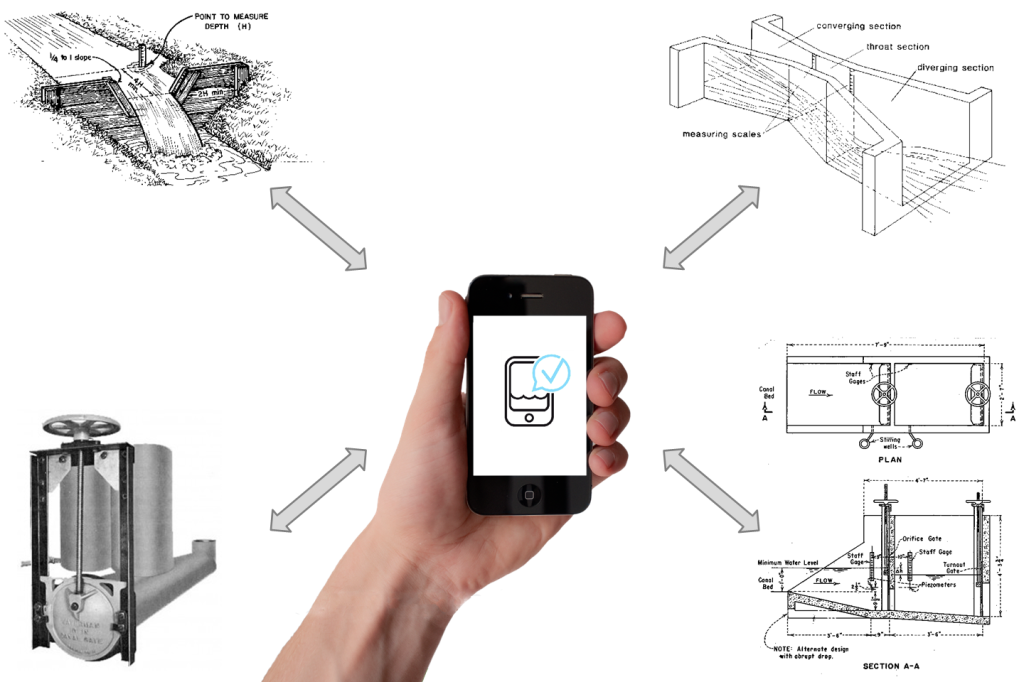Flow Measurement (SBx7-7)
The MobileTracker accurately measures water level with the click of a button. The method used to convert water level (i.e. stage) to flow varies greatly, and depends largely on site configuration. For the most part, the MobileTracker will be used in conjunction with standard critical flow measurement devices. Examples of commonly used critical flow measurement devices include:
 Sharp Crested Weirs – Cipoletti, V-notch, Suppressed, Contracted, etc.
Sharp Crested Weirs – Cipoletti, V-notch, Suppressed, Contracted, etc.- Broad Crested Weirs – Replogle flume, ramp flume, etc.
- Orifice Gates – Meter gates, constant head orifice (CHO) gate, etc.
The MobileTracker can also be used in conjunction with an empirically derived relationship between water level and flow rate (i.e. rating curve or rated section). In this case, the accuracy of the MobileTracker’s flow rate measurements is largely dependent on the accuracy of the rating curve, in addition to a small amount of error introduced by the water level measurement itself.
The accuracy requirements of the Agricultural Water Measurement regulation (California Code of Regulations Title 23 Section 597 or CCR 23 §597) stemming from Senate Bill x7-7 (SBx7-7) apply to delivery volumes, not flow rate. Volumetric accuracy is a function of the accuracy of flow rate and duration measurements.
Additionally, upstream and downstream water level fluctuations can impact overall volumetric accuracy. For example, if an irrigation district uses Parshall flumes as standard measurement devices, the equation relating water level to flow is well documented. As long as the Parshall flumes were constructed properly, have been appropriately maintained, and are operating within their design capacity, the United States Bureau of Reclamation Water Measurement Manual estimates a free-flow accuracy of 3 to 5 percent.
Bottom line: if you could certify your flow measurement device(s) with manual water level readings, then you could certify your device(s) using the MobileTracker; it all comes down to the accuracy of the flow measurements themselves. The additional uncertainly caused by errors in water level readings are for the most part negligible.
